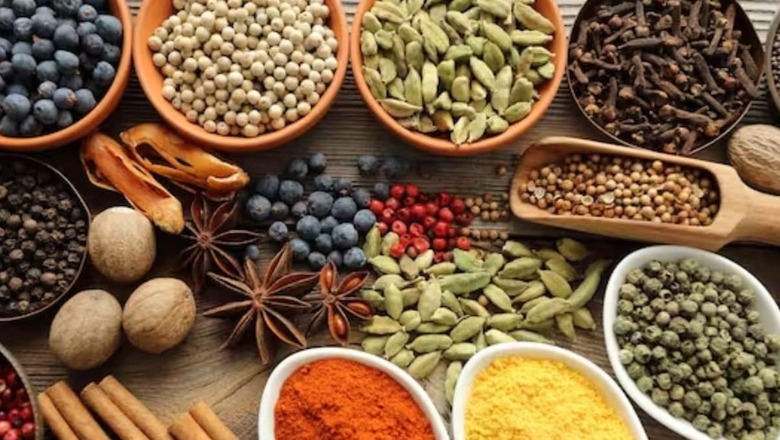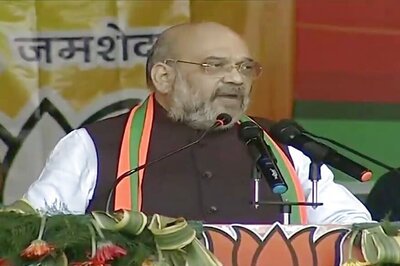
views
With the next general elections just round the corner, fighting food inflation and striking a balance between the interests of the farmer and the consumer have been key concerns of the BJP-led NDA government. From liquidating rice and wheat stocks with the Food Corporation of India (FCI) in the open market to direct interventions in the market by providing subsidised atta (wheat flour), dal, tomatoes and onions to tweaking export-import policy, the department of consumer affairs has been on its toes in fighting food inflation.
On December 28, the government extended the free import policy of tur (pigeon peas) and urad by one more year till March 31, 2025. The earlier policy was up to March 31 next year. The move is expected to facilitate the import of pulses and boost domestic availability
Bharat atta and dal in the market, rice coming soon
A key intervention has been the central government’s move to provide subsidised pulses and atta through its agencies. With pulses, especially tur and moong, threatening to breach the Rs 100 mark in retail markets, the government launched the Bharat Dal scheme in July through which chana dal was made available at Rs 60 a kilo and Rs 55 for a three-kilo pack. Bharat Dal is provided to the Army, CAPF, state governments and also directly to consumers through more than 3,500 retail outlets. Just as the chana buffer was converted into chana dal, a decision has been taken to convert the moong buffer into moong dal for distribution at subsidised prices. It is important to note that India relies on imports to meet domestic demand for pulses which is one of the reasons for the inflationary tendencies that it exhibits.
In November, the union food and consumer affairs minister launched the Bharat Atta scheme for retail consumers at a rate of Rs 27.50 per kg. 2.5 LMT of buffer wheat stock was allocated for semi-government and cooperative bodies like the Kendriya Bhandar, NCCF, and NAFED at Rs 21.50 for converting it into atta and distribution in the open market. There is a buzz that the central government is planning to make available subsidised rice under the Bharat brand to cool retail prices which are hovering around Rs 43 a kilo. To ensure domestic availability, the government has already banned the export of non-Basmati rice and imposed a floor price of USD 950 for the export of Basmati rice. Wheat exports are also banned. Stock limits have been imposed on cereals to check hoarding. Additionally, through the open market scheme, 82.89 LMT of wheat and 3.04 LMT of rice have been offloaded through e-auctions to keep prices stable.
Tomatoes and onions
In July and August, when tomato prices skyrocketed, the department of consumer affairs intervened by providing tomatoes initially at Rs 70 a kilo through its cooperative bodies and mobile vans in Delhi-NCR, Rajasthan, and Uttar Pradesh, which was later brought down to Rs 40 a kilo. As tomato being a perishable commodity cannot be stored in a buffer, the department of consumer affairs directed NCCF and NAFED to procure it from mandis across Andhra Pradesh, Karnataka, and Maharashtra for disposal at centres where the price was ruling high.
In the intervening period, however, prices hit an abnormal high of a staggering Rs 200 a kilo. When it came to onions, not wanting to take any chances, the government first imposed an MEP of USD 800 per MT in October and subsequently banned exports altogether. Simultaneously, it released stocks from the onion buffer to keep prices stable and stepped up procurement from protesting onion farmers to ensure that they got a fair price.
Price Monitoring Cell strengthened
One of the important instruments with the government to fight inflation is its own Price Monitoring Cell, which keeps an eye on the wholesale and retail prices of 22 essential commodities. This year, 140 new price reporting centres were added to the existing 410, making the mechanism more robust and accurate. The central government gave Rs 6,23,68,711 to states and union territories to further strengthen the price monitoring mechanism.
The 22 essential commodities being monitored are rice, wheat, four kinds of pulses, five varieties of oils, sugar, jaggery, vanaspati, tea, milk, salt, potato, tomato, and onion. The secretary of consumer affairs said that these additional centres vastly improved the price gathering and forecast system of the government. The union government aims to add another 200 price monitoring centres with a presence in every district in the country.
Price stabilisation fund
Created in 2014-15, the price stabilisation fund has played a crucial role in taming inflationary pressures in potatoes, onions, and pulses. The fund allows agencies like the NCCF and NAFED to procure these commodities during the harvest season to create a buffer stock with the government.
When prices show steep spikes, these commodities are released strategically into the market in a calibrated manner. The graded release of onion from the buffer and procurement from farmers for additional buffer stocks is an example of this.
















Comments
0 comment